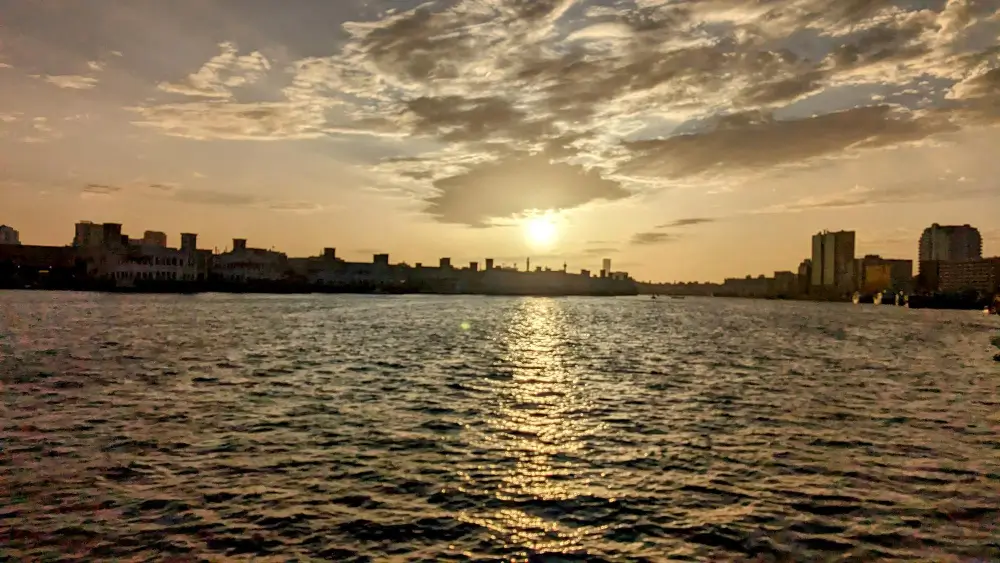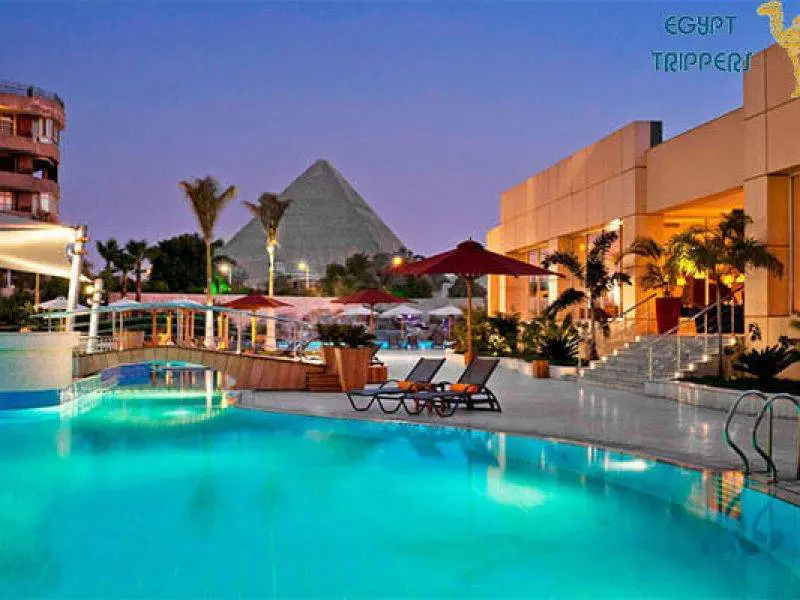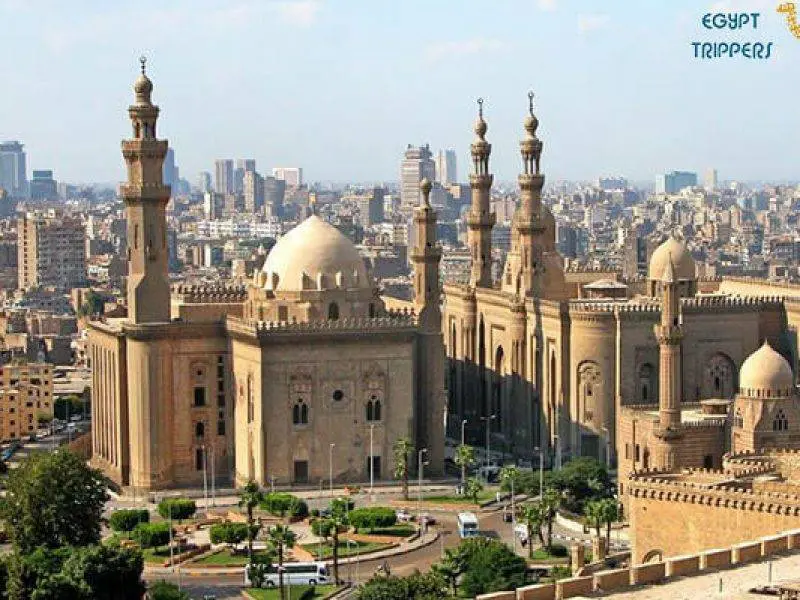Legally or Practically? Breaking Down the Real Rules on Can You Swim in the Nile

Ever dreamed of floating in the legendary Nile River, just like ancient pharaohs might have? The idea sounds magical — warm sun, endless water, history flowing beneath you. But before you pack your swimsuit, let’s pause for a reality check. Can you swim in the Nile safely today? The short answer: it depends — and the long answer might surprise you.
From crocodile-infested currents in the south to polluted stretches near urban hubs like Cairo, the Nile isn’t always the dreamy swim spot Instagram might suggest. But that doesn’t mean the entire river is off-limits. Some places are safer than others, and knowing the difference could literally save your life — or at least your vacation.
can you swim in the nile?

Technically? Yes. But should you? That’s where things get complicated.
The Nile is one of the most iconic rivers in the world — long, winding, and full of history. It stretches over 6,600 kilometers across 11 countries. And yes, people do swim in parts of it. But here’s what you need to know before even considering it:
1. Wildlife Risks (Yes, Including Crocodiles)
-
In southern parts of Egypt and most of Sudan, the Nile is home to Nile crocodiles and hippos.
-
These animals are dangerous, especially in Upper Egypt and sub-Saharan regions.
-
Swimming in these areas is strongly discouraged, if not outright life-threatening.
2. Waterborne Diseases
-
Schistosomiasis (also called bilharzia) is a serious parasitic disease found in many freshwater bodies in Africa, including parts of the Nile.
-
It can enter the body through intact skin. You don’t even need to swallow the water — just being in it is enough.
-
Egypt has worked hard to reduce this in certain areas, but it’s still a real risk, especially in rural or less monitored zones.
3. Pollution and Urban Waste
-
In areas like Cairo, the Nile is heavily polluted with industrial discharge, sewage, and trash.
-
Swimming here isn’t just unsafe — it’s downright unhealthy.
-
You’re more likely to leave with a stomach bug than good memories.
4. Safe Zones (Yes, There Are a Few)
-
Some tourist resorts near Aswan and luxury Nile cruises offer designated swimming spots with filtered water access.
-
In Uganda, particularly near Jinja, the source of the Nile is popular for white-water rafting and swimming — and much cleaner.
-
Always ask locals or guides before entering the water, even in seemingly safe areas.
Bottom Line:
You can swim in the Nile — but you probably shouldn’t unless:
-
You’re in a monitored, safe location
-
There’s no risk of parasites or wildlife
-
You trust the water quality and local guidance
It’s a river of legends, but it’s also wild, unpredictable, and not your average swim spot.
Sailing the Nile on a Felucca
If dipping into the Nile feels risky — and in most places, it is — then sailing it on a felucca is your perfect Plan A. Feluccas are traditional wooden sailboats that have graced the Nile for centuries. No noisy motors, no crowds. Just the breeze, the river, and that golden Egyptian sun.
Why Tourists Love Felucca Trips:
-
Authentic Experience: You’re not on a speedboat — you’re floating on history. The same way pharaohs, traders, and explorers once did.
-
Peaceful Vibes: No engine noise. Just the soft swish of the sail and gentle lapping of water.
-
Flexible Routes: Most popular around Aswan and Luxor, but some trips last days and include camping on the riverbanks.
-
Local Connection: Most felucca captains are Nubians who know the Nile like the back of their hand. You’ll hear real stories, eat real food, and skip the tourist traps.
Quick Tips for a Great Felucca Ride:
-
Go at sunset — it’s pure magic.
-
Bring light layers — days are hot, nights can get chilly.
-
Always book with a reputable guide or host — especially for overnight journeys.
-
Pack snacks, water, and sunscreen (shade is minimal).
Is It Safe?
Yes — much safer than swimming. Feluccas sail in calm sections of the Nile, and captains are experienced in navigating both tourists and tides. Just make sure you wear a life jacket if you’re not a strong swimmer, especially with children on board.
Swimming in the Nile – (Don’t do it)
It might look calm and inviting, especially under the Egyptian sun, but let’s be blunt: swimming in the Nile is a bad idea — and in most places, it’s downright dangerous.
Here’s why you should stay out of the water:
1. Crocodiles and Hippos
In southern Egypt, Sudan, and other upstream areas, Nile crocodiles still roam freely. They’re not just scary — they’re deadly. Hippos, surprisingly, are even more aggressive. If you’re anywhere near their habitat, getting in the water is asking for trouble.
2. Parasitic Infections
One of the biggest health risks is schistosomiasis — a parasite that enters your body through the skin. It causes long-term damage to internal organs and is still present in many stretches of the Nile. You won’t see it, but it will find you.
3. Pollution
Around major cities like Cairo, the river is full of industrial waste, sewage, and runoff. The water might look fine, but it carries bacteria, chemicals, and trash you don’t want on your skin — let alone in your body.
4. Currents and Depth
The Nile may appear still, but it hides strong undercurrents and deep, uneven areas. Even strong swimmers can get pulled under or trapped. There are few lifeguards, and emergency help is often far away.
The Safer Choice?
Stick to the boat decks. Take the felucca ride. Snap your selfies. Watch the sunset. But don’t swim. Even locals rarely do, and when they do, it’s in specific rural or highly familiar areas — not the ones tourists visit.
Isn’t there Crocodiles in the Nile?
Absolutely. The Nile is home to Nile crocodiles — one of the largest and most aggressive crocodile species in the world. These aren’t zoo animals. They’re wild, territorial, and capable of taking down large prey — including humans.
Key facts:
-
Size: Nile crocodiles can grow over 5 meters (16 feet) long.
-
Habitat: Most common in southern Egypt, Sudan, and throughout Sub-Saharan Africa.
-
Behavior: They’re ambush predators. You won’t see them before it’s too late.
-
Risk level: High in areas around Aswan, Lake Nasser, and the southern stretches of the Nile. Lower in central/northern Egypt, but not impossible.
What About Cairo or Luxor?
Crocodile sightings north of the Aswan High Dam are extremely rare, mostly because the dam acts as a barrier. So while you’re unlikely to see one in Cairo, that doesn’t mean it’s safe to swim — pollution and parasites are the main concern there.
Bottom Line:
Yes, there are crocodiles in the Nile.
And no, you shouldn’t take your chances — especially not as a tourist unfamiliar with local waters.
How did I know that I had Schistosomiasis?
Schistosomiasis (also known as bilharzia) is a parasitic infection caused by microscopic worms that live in certain freshwater sources — including parts of the Nile. You can get infected simply by wading or swimming in contaminated water.
Early Warning Signs (Days to Weeks After Exposure)
Most people don’t feel anything right away — but within days or weeks, symptoms can begin:
-
Rash or itchy skin (often where the parasite entered the body)
-
Fever and chills
-
Fatigue
-
Muscle aches
-
Dry cough
This early stage is sometimes called “swimmer’s itch” or “Katayama fever.”
Later Symptoms (Weeks to Months)
If left untreated, the parasites settle in your blood vessels and lay eggs, causing long-term inflammation and damage to organs like the liver, intestines, bladder, or kidneys.
You might notice:
-
Abdominal pain
-
Bloody urine or stool
-
Frequent urination
-
Liver or spleen swelling
-
Weight loss or persistent fatigue
How Is It Diagnosed?
-
Stool or urine test: To detect parasite eggs.
-
Blood test: To find antibodies or antigens.
-
Ultrasound: For organ damage in advanced cases.
If you even suspect exposure — especially if you swam or waded in the Nile — see a doctor as soon as possible. Schistosomiasis is treatable with a prescription medication called praziquantel, but the earlier it’s caught, the better.
Getting tested & diagnosed with Schistosomiasis
If you’ve been swimming or wading in the Nile or any freshwater source in Africa and feel “off” — don’t wait it out. Schistosomiasis can go unnoticed at first but lead to serious long-term damage if untreated.
Here’s exactly what to do:
Step 1: See a Doctor (Preferably a Travel Medicine Specialist)
Tell them:
-
Where you traveled (mention the Nile or any specific region)
-
If you swam, waded, or had any skin contact with freshwater
-
Any symptoms — even mild fatigue, rash, or odd urination
Even if you feel fine, don’t skip this. Some cases remain silent for weeks or months before flaring up.
Step 2: Ask for These Tests
1. Stool and/or Urine Sample
-
Checks for parasite eggs.
-
May require multiple samples across different days for accuracy.
2. Blood Test (Serology)
-
Detects antibodies or antigens if eggs aren’t found.
-
Useful in early stages or if symptoms are vague.
3. Optional Imaging
-
Ultrasound or CT scan may be used if there’s concern about liver, kidney, or bladder damage in chronic cases.
Step 3: Confirmed? Here’s the Treatment
-
The go-to drug is praziquantel — an oral antiparasitic.
-
Usually taken as a single-day dose (or spread over two days).
-
It kills the adult worms, preventing egg-laying and long-term complications.
Note: You may feel tired or flu-like as your body reacts to the dying parasites. That’s common — and temporary.
After Treatment: Do I Need a Follow-up?
Yes:
-
A repeat test (usually 6–12 weeks later) confirms the infection is cleared.
-
If your doctor suspects lasting organ involvement, they may continue monitoring.
Bottom line:
If you’ve been in the Nile, get tested — even if you’re symptom-free. Early treatment is simple. Ignoring it isn’t worth the risk.
Travel to Egypt and Discover the Allure of the Nile in Aswan
If there’s one place where the true magic of the Nile comes alive, it’s Aswan. Calm, sun-soaked, and steeped in Nubian heritage, Aswan is where the Nile slows down — and invites you to do the same.
This isn’t just a destination. It’s an experience.
Why Aswan Stands Out:
-
Tranquil Waters: Unlike the bustling, polluted stretches near Cairo, the Nile in Aswan is peaceful and remarkably clean.
-
Felucca Heaven: This is the best place in Egypt to sail the Nile the traditional way. No engines, no noise — just the wind and water.
-
Nubian Culture: Visit colorful Nubian villages, taste authentic home-cooked meals, and meet locals who’ve lived by the river for generations.
-
Iconic Sights: Explore Philae Temple, take a boat ride to Agilkia Island, or wander through the Aswan Bazaar at sunset.
-
Relaxation: The vibe here is slower, more reflective — perfect for disconnecting and soaking in Egypt’s soul.
A Safer, More Soulful Nile Experience
Aswan gives you the chance to connect with the Nile without needing to touch the water. Whether you’re watching the sunrise over the riverbanks or sipping tea on a felucca deck, the experience is deeply moving — and safe.
This is where the Nile isn’t just a river. It’s a rhythm. A way of life. A story that continues to unfold, gently and beautifully.
Explore Eco-Friendly Nile Swimming Spots
While most of the Nile is not safe for swimming, there are a few rare, eco-conscious spots where locals and experienced travelers do take a dip — carefully, and under the right conditions. These aren’t your average public beaches. They’re monitored, relatively clean, and often part of sustainable tourism efforts.
So, where can you swim (if you really must)?
1. Nile Source – Jinja, Uganda
-
This is one of the cleanest points of the Nile, where it flows out of Lake Victoria.
-
Popular for white-water rafting, kayaking, and yes — guided swimming.
-
Several eco-lodges and tour operators monitor water quality and safety.
Risks: Still freshwater — so schistosomiasis remains a potential risk. Always ask about current water conditions and avoid stagnant areas.
2. Selected Eco-Resorts in Aswan
-
A handful of Nubian-owned resorts offer filtered Nile access or enclosed swim areas.
-
These may be cleaner, but aren’t 100% parasite-free.
-
Best enjoyed for wading or cooling off the feet, not full swimming.
Tip: Ask if they test the water regularly — and if schisto control programs are active in the area.
3. Lake Nasser – NOT Recommended
-
Some guides suggest swimming in Lake Nasser (south of Aswan), but it’s home to Nile crocodiles.
-
Despite clear waters, this is not safe, especially for casual swimmers.
Important Reminders:
-
No matter how clean the water looks, parasites are invisible.
-
Avoid swimming at dusk or dawn — peak time for parasites and animal activity.
-
Choose lodges that follow eco-sanitation and local safety regulations.
-
Never swim alone, and always ask locals or guides before entering.
Final Word:
If you’re passionate about wild swimming and sustainability, the Nile can tempt you — but this is a river of myth and risk. Stick to guided, eco-friendly zones, and when in doubt: enjoy it from the boat, not the water.
Choose the Best Alternatives for a Refreshing Dip
Still craving that refreshing swim under the Egyptian sun? You don’t have to risk parasites or crocodiles to cool off. Here are safer, cleaner alternatives to swimming in the Nile — perfect for travelers who want comfort without compromise.
1. Hotel Rooftop Pools with Nile Views
Many hotels in Cairo, Aswan, and Luxor offer stunning rooftop or riverside pools — giving you the beauty of the Nile without the danger.
Top picks:
-
Sofitel Legend Old Cataract Aswan
-
Hilton Luxor Resort & Spa
-
Kempinski Nile Hotel Cairo
Enjoy a drink, swim safely, and soak in a panoramic view.
2. Red Sea Resorts (3–6 hours from Cairo)
If you’re serious about swimming, head east to Hurghada, El Gouna, or Sharm El Sheikh. You’ll find:
-
Crystal-clear saltwater
-
Coral reefs for snorkeling
-
High-end eco-resorts and budget options
Bonus: No risk of schistosomiasis, and the marine life is a whole other adventure.
3. Natural Oases & Springs (Farafra, Siwa, Bahariya)
Want something off the beaten path? Try a natural desert spring. These are freshwater, but often filtered and safe for short dips.
-
Siwa Oasis: Cleopatra’s Spring is a favorite.
-
Bahariya Oasis: Warm and mineral-rich springs, great after desert treks.
Note: Always check for cleanliness and ask locals if the spring is safe for swimming.
4. Luxury Nile Cruise Pools
Some modern Nile cruises come equipped with private sundecks and small pools — so you can float on the river, not in it.
It’s the best of both worlds: the Nile’s serenity, and your own chlorinated slice of heaven.
Final Tip:
When in doubt, choose elevated water, filtered water, or saltwater. Let the Nile be your backdrop — not your swimming pool.
What is the best time for Nile Cruise in Egypt?
The best time for a Nile cruise is during Egypt’s cooler months, from October to April. This is when the weather is most comfortable, the skies are clear, and exploring ancient temples won’t feel like a survival challenge.
Best Season: October to April (Peak Season)
-
Weather: Mild and pleasant — ideal for sightseeing
-
Temperature: Daytime ranges from 22°C to 30°C (72°F to 86°F)
-
Bonus: Fewer insects, clearer skies, and more enjoyable deck time
Perfect for:
-
Visiting temples like Karnak, Edfu, and Philae
-
Relaxing on the sundeck without overheating
-
Comfortable walking tours in Luxor and Aswan
Shoulder Season: September & May
-
Warmer, but bearable
-
Fewer tourists and better cruise deals
-
Early mornings and late afternoons are best for excursions
Avoid: June to August (High Summer)
-
Extremely hot, especially in Upper Egypt (Luxor & Aswan can hit 45°C / 113°F)
-
Cruise interiors are air-conditioned, but temple visits become exhausting
-
Off-season prices are tempting — but comfort drops
Pro Tip:
- December and January are the most popular — book early if you’re planning a holiday-season trip.
- For the best mix of weather, crowd levels, and value, October or March are ideal.
Can you swim in the Nile in Luxor?
Technically, yes — but you really shouldn’t.
While Luxor’s stretch of the Nile may look calmer and cleaner than Cairo’s, it still carries serious risks that make swimming unsafe for most tourists.
Here’s why swimming in the Nile in Luxor is not recommended:
1. Parasites (Schistosomiasis) Are Still a Risk
Even if the water looks clear, it can contain microscopic parasites that cause schistosomiasis — a disease that enters through the skin and can lead to long-term health issues. This is a known risk throughout Upper Egypt, including Luxor.
2. No Designated Safe Swim Areas
There are no public swimming zones, no lifeguards, and no real emergency infrastructure for swimmers. If something goes wrong, help is far away.
3. Strong Currents Below the Surface
The Nile’s surface might look slow, but there are deep currents and sharp drop-offs that can easily overpower an unsuspecting swimmer.
4. Water Pollution from Boats and Nearby Agriculture
Feluccas, cruise ships, and local boats discharge waste, fuel, and chemicals into the water — especially around populated areas like Luxor’s East Bank. It’s not hygienic, even if it doesn’t smell bad.
So… Do Locals Swim There?
Occasionally — yes. Some locals might swim in remote rural spots, but they’re used to the risks, and most do it out of necessity or routine, not for leisure. Even they often avoid it.
Safer Alternative:
-
Book a hotel with a rooftop or riverside pool — you’ll get all the Nile views, zero health risks.
-
Want adventure? Try white-water rafting or kayaking in the Nile’s safer headwaters — like Jinja, Uganda.
Bottom line:
Don’t swim in the Nile in Luxor. Enjoy the views, take a felucca ride, but keep your feet dry.
Can you swim in the Nile in Aswan?
It’s tempting — but not without serious caution.
Of all the places in Egypt, Aswan is one of the few where swimming in the Nile is sometimes done, especially by locals and experienced travelers. The water here is cleaner, calmer, and more scenic than in Cairo or Luxor — but that doesn’t mean it’s risk-free.
What Makes Aswan’s Nile Different?
-
Below the Aswan High Dam, crocodiles are extremely rare (unlike further south near Lake Nasser).
-
Water clarity is noticeably better — the Nile here flows around rocky islands and Nubian villages, with fewer pollutants.
-
You might see local children or Nubians swimming or bathing in shallow edges, especially in rural areas.
But Here’s the Catch:
1. Schistosomiasis Is Still a Risk
The parasite that causes this disease still exists in Aswan’s freshwater, especially in slow-moving or stagnant spots. You can get infected just by standing or wading in contaminated water.
2. No Supervision or Safe Zones
There are no official swimming areas, lifeguards, or medical help nearby if something goes wrong. Most of the shoreline is rocky or uneven, not ideal for getting in or out safely.
3. Hidden Currents
Even where the surface looks calm, underwater currents can shift quickly, especially around islands or boat traffic routes.
Is Anyone Swimming There?
-
Yes, some locals swim, especially in Nubian villages on islands like Gharb Soheil or Elephantine Island.
-
Some eco-lodges offer controlled swim areas, but you should always ask if the water is tested and if parasite risk is low.
Verdict:
Can you swim in the Nile in Aswan?
Yes — but only in select, trusted areas, and even then, it’s not recommended for tourists unless under the guidance of a reputable local host or lodge.
Much safer alternatives include:
-
Swimming in your hotel pool with Nile views
-
Sailing on a felucca
-
Wading briefly at safe, guided village spots (with precautions)
Do crocodiles swim in the Nile?
Yes — and the Nile crocodile is one of the most dangerous freshwater predators in the world.
The Nile crocodile (Crocodylus niloticus) is native to much of Sub-Saharan Africa and is still present in parts of the Nile River system, especially south of the Aswan High Dam. These reptiles are powerful swimmers, perfectly adapted to stalking prey in murky waters.
Where Are Nile Crocodiles Found?
-
South of the Aswan High Dam (Lake Nasser and beyond):
Crocodiles are common, especially near the Sudanese border and in Lake Nasser. Locals and fishermen in these areas often spot them — and avoid the water. -
North of the Aswan Dam (Luxor, Cairo, Delta):
Extremely rare to non-existent. The High Dam acts as a barrier, preventing crocodiles from reaching northern Egypt. Sightings here are virtually unheard of in modern times.
Are They Dangerous?
Absolutely:
-
Nile crocodiles can grow over 5 meters (16+ feet) long.
-
They are ambush predators capable of dragging large animals — or people — underwater.
-
Attacks are not uncommon in rural parts of central and east Africa, especially in isolated villages along rivers and lakes.
Do They Swim Near Tourist Areas?
In Aswan and northward, it’s very unlikely.
However, in southern Egypt (especially around Lake Nasser) and in other African Nile regions (like South Sudan or Uganda), they are active swimmers and should be taken seriously.
Bottom Line:
Yes, crocodiles swim in the Nile, but not everywhere. If you’re north of Aswan, the risk is close to zero. South of the High Dam or in deeper Africa — stay out of the water unless you’re with local experts who know it’s safe.
FAQ
Is it safe to swim in the Nile in Cairo or Luxor?
No. The river is polluted and carries a risk of schistosomiasis, a serious parasitic infection.
Do locals swim in the Nile?
Sometimes — mostly in rural or Nubian village areas. But even locals take precautions and usually avoid the water near major cities.
Are there any safe places to swim near the Nile?
Yes, safer alternatives include:
-
Hotel pools with Nile views in Aswan, Luxor, Cairo
-
Eco-lodges with filtered river access (ask about parasite testing)
-
Red Sea resorts (crystal-clear saltwater and no freshwater parasites)
-
Natural desert springs (e.g. Siwa Oasis)
What’s the best time to take a Nile cruise?
October to April is ideal — cooler temperatures, clearer skies, and more comfortable sightseeing weather.
Can you enjoy the Nile without swimming?
Absolutely. Try:
-
Felucca rides
-
Luxury Nile cruises
-
Sunset walks along the Corniche
-
Visiting temples by boat
What are the symptoms of schistosomiasis?
- Early: rash, fever, fatigue
- Later: abdominal pain, blood in urine or stool
- If you’ve had freshwater exposure, see a doctor and get tested.
Conclusion
The Nile is more than just a river. It’s Egypt’s beating heart — flowing with history, myth, and life. But as beautiful and iconic as it is, it’s not a swimming spot for tourists.
Between hidden currents, parasites, and the occasional predator, the risks far outweigh the thrill. While a few locals may still dip in, that doesn’t make it safe — especially for unprepared visitors.
Thankfully, the Nile offers countless safer ways to experience its magic:
-
Sail a felucca under the sunset
-
Sip tea on a cruise deck
-
Walk its banks in Luxor or Aswan
-
Take in the silence of the desert where it meets the water
Respect the river, and it will reward you with unforgettable moments — just keep your feet dry while you’re at it.



Leave a Reply